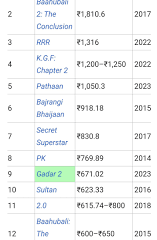Inception: A Landmark in Modern Cinematic Storytelling

Introduction
The film Inception, directed by Christopher Nolan and released in 2010, has become a defining piece of modern cinema since its debut. Combining elements of science fiction, action, and psychological thriller, the movie explores complex themes around dreams and reality. It has not only garnered critical acclaim but also sparked discussions on its intricate narrative structure and philosophical implications. As audiences continue to revisit the film, its relevance remains significant in both cinematic history and storytelling techniques.
Plot Overview and Themes
Inception follows Dom Cobb, played by Leonardo DiCaprio, a skilled thief who specializes in stealing secrets from deep within the subconscious during the dream state. Tasked with an impossible mission—to plant an idea into a target’s mind rather than extract one—Cobb assembles a team of specialists. The film intricately weaves together layers of dreams, challenging viewers to differentiate between what is real and what is not. This concept of “shared dreaming” not only serves as a plot device but also raises questions about perception, identity, and consciousness.
Innovative Cinematic Techniques
One of the most notable aspects of Inception is its groundbreaking visual effects, which brought the dream sequences to life in visually stunning ways. From city streets folding over themselves to gravity-defying battles, the film’s artistry has set a new standard for cinematic visual storytelling. Additionally, Hans Zimmer’s powerful score, featuring the iconic “BRAAAM” sound, has influenced modern film scores, becoming a staple in action and thriller genres.
Critical Reception and Legacy
Upon its release, Inception was a commercial success, grossing over $800 million worldwide. It received multiple accolades, including four Academy Awards, recognizing its artistic achievements in visual effects, sound, production design, and original score. Critics praised Nolan’s ability to blend a thought-provoking narrative with mainstream appeal, thus broadening the scope of what a blockbuster could achieve.
Conclusion
As we continue to analyze Inception, its significance as a cultural phenomenon becomes increasingly clear. The film challenges audiences to engage with its multi-layered narrative and confront their understanding of reality. With ongoing discussions and interpretations, Inception remains a pivotal work in cinematic history, influencing not only filmmakers but also provoking thought across various domains including philosophy and psychology. Future generations will likely continue to explore its themes and innovations, solidifying its legacy as a landmark in modern storytelling.









